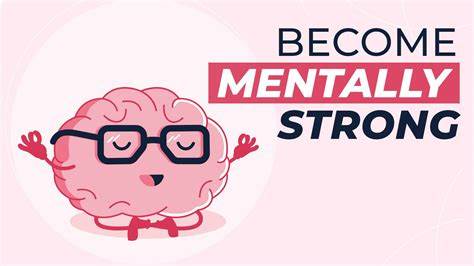The process of simultaneously gaining muscle and losing fat, often referred to as body recomposition, is a highly sought-after but challenging goal in fitness. While traditionally thought to be mutually exclusive, it is indeed possible, especially for certain individuals, by strategically combining nutrition, strength training, and cardio. This how-to guide will break down the essential steps to achieve body recomposition effectively. Achieving muscle gain while losing fat requires a precise and consistent approach. It’s not about quick fixes but sustainable lifestyle changes. Here’s a step-by-step guide:
Step 1: Understand Your Caloric Intake
The foundation of body recomposition lies in managing your calorie intake.
- Slight Calorie Deficit or Maintenance for Fat Loss: To lose fat, you generally need to be in a calorie deficit, meaning you consume fewer calories than your body burns. However, for body recomposition, this deficit should be slight (around 200-300 calories below maintenance) or you can even aim for calorie maintenance. A large deficit can hinder muscle growth.
- Calculate Your Maintenance Calories: Use an online TDEE (Total Daily Energy Expenditure) calculator to estimate your daily calorie needs to maintain your current weight. This is your starting point.
- Adjust Based on Progress: Monitor your weight and body composition weekly. If you’re losing fat but not gaining muscle, slightly increase your calories. If you’re gaining weight too quickly (likely fat), slightly reduce them. This is an iterative process.
Step 2: Prioritize Protein Intake
Protein is paramount for muscle growth and fat loss.
- High Protein Intake: Aim for a high protein intake, roughly 1.6 to 2.2 grams of protein per kilogram of body weight (or 0.7 to 1 gram per pound). This helps preserve muscle mass in a deficit and supports muscle repair and growth.
- Distribute Protein Throughout the Day: Spread your protein intake across multiple meals to optimize muscle protein synthesis.
- Good Protein Sources: Include lean meats (chicken, turkey, lean beef), fish, eggs, dairy, legumes, and protein supplements (whey, casein, plant-based) in your diet.
Step 3: Optimize Macronutrient Ratios
While protein is king, carbohydrates and fats also play crucial roles.
- Carbohydrates for Energy: Don’t fear carbs. They provide essential energy for your workouts and fuel muscle recovery. Focus on complex carbohydrates like whole grains, fruits, and vegetables. Adjust carbohydrate intake based on your activity level. On training days, you might consume more carbs.
- Healthy Fats for Hormonal Balance: Healthy fats are vital for hormone production and overall health. Include sources like avocados, nuts, seeds, and olive oil. Aim for 0.5 to 1 gram of fat per kilogram of body weight.
Step 4: Implement Effective Strength Training
Strength training is non-negotiable for muscle gain.
- Lift Heavy, Progressively: Focus on progressive overload, meaning you consistently increase the challenge to your muscles. This could be by lifting heavier weights, increasing repetitions, doing more sets, or decreasing rest times.
- Compound Exercises: Prioritize compound movements that work multiple muscle groups simultaneously, such as squats, deadlifts, bench presses, overhead presses, and rows. These are highly effective for building overall muscle mass.
- Training Frequency: Aim for 3-5 strength training sessions per week, hitting each major muscle group 2-3 times per week.
- Rep Ranges: Incorporate a mix of rep ranges. While higher reps can be good for endurance, 6-12 reps per set are generally effective for hypertrophy (muscle growth).
Step 5: Incorporate Strategic Cardio
Cardio plays a supporting role in fat loss without compromising muscle mass.
- Moderate Cardio: Avoid excessive cardio, especially high-intensity steady-state cardio, which can hinder muscle growth.
- HIIT (High-Intensity Interval Training): Short bursts of intense exercise followed by brief rest periods can be very effective for fat loss while potentially preserving muscle. Limit HIIT to 1-2 sessions per week.
- LISS (Low-Intensity Steady-State) Cardio: Walking or light cycling can be done more frequently to increase calorie expenditure without significantly impacting recovery or muscle growth.
- Timing: Consider doing cardio on separate days from your strength training, or after your strength training session, to avoid negatively impacting your lifts.
Step 6: Prioritize Sleep and Recovery
Recovery is where your muscles actually grow.
- Adequate Sleep: Aim for 7-9 hours of quality sleep per night. Sleep is crucial for hormone regulation (growth hormone, testosterone, cortisol) and muscle repair.
- Stress Management: High stress levels can increase cortisol, which can hinder fat loss and muscle gain. Incorporate stress-reducing activities into your routine.
- Rest Days: Allow your body adequate rest days between intense training sessions. This gives your muscles time to repair and rebuild.
Step 7: Stay Hydrated
Water is essential for all bodily functions, including metabolism and nutrient transport.
- Drink Plenty of Water: Aim for at least 2-3 liters of water per day, more if you’re active or in a hot climate. Proper hydration supports performance and recovery.
Step 8: Monitor Progress and Adjust
Tracking your progress is critical for success in body recomposition.
- Regular Measurements: Don’t just rely on the scale. Take body measurements (waist, chest, arms, thighs) and progress photos regularly (e.g., every 2-4 weeks).
- Body Fat Percentage: Consider getting your body fat percentage measured periodically (e.g., DEXA scan, calipers) for a more accurate picture of your progress.
- Performance in the Gym: Track your lifts and aim for consistent improvements in strength.
- Be Patient: Body recomposition is a slow process. It requires consistency and patience. Don’t get discouraged if results aren’t immediate. Celebrate small victories and continue to adjust your approach based on what your body tells you.
Step 9: Consider Supplements (Optional)
While not essential, some supplements can support your body recomposition journey.
- Creatine Monohydrate: Helps improve strength and power output, leading to better workouts and muscle gains.
- Whey Protein: Convenient source of high-quality protein for post-workout recovery or to hit daily protein targets.
- Caffeine: Can boost energy and focus during workouts.
- Omega-3 Fatty Acids: Support overall health and can help reduce inflammation.
- Vitamin D: Important for bone health and can influence testosterone levels.
Remember, supplements are just that – supplements to a solid foundation of diet and exercise, not replacements.
Step 10: Consistency and Mindset
The most powerful tools in your body recomposition arsenal are consistency and a positive mindset.
- Adherence is Key: Stick to your nutrition and training plan consistently, even on days you don’t feel like it.
- Be Patient: Results take time. Embrace the journey and focus on making sustainable changes.
- Seek Guidance: If you’re unsure, consider consulting a certified personal trainer or registered dietitian. They can provide personalized advice tailored to your specific needs and goals.
By diligently following these steps, you can effectively work towards the challenging yet rewarding goal of gaining muscle and losing fat at the same time.





